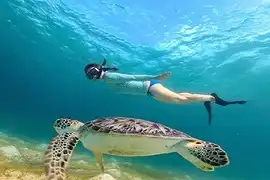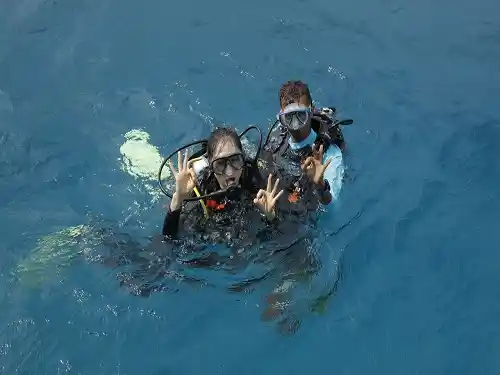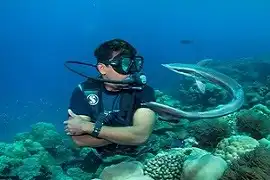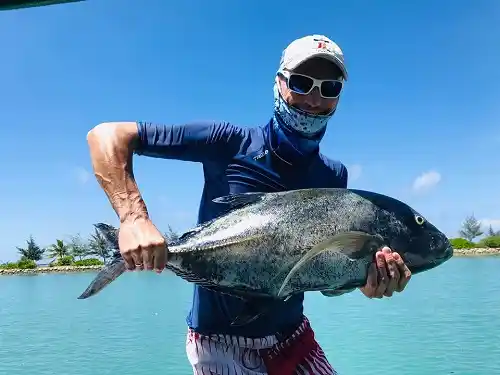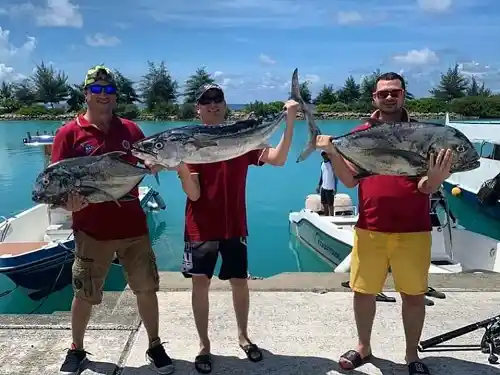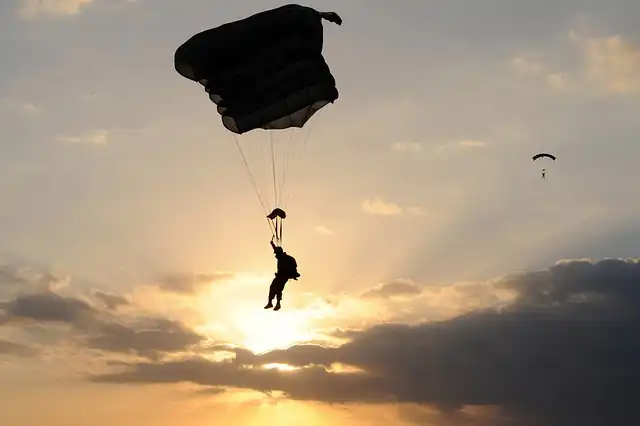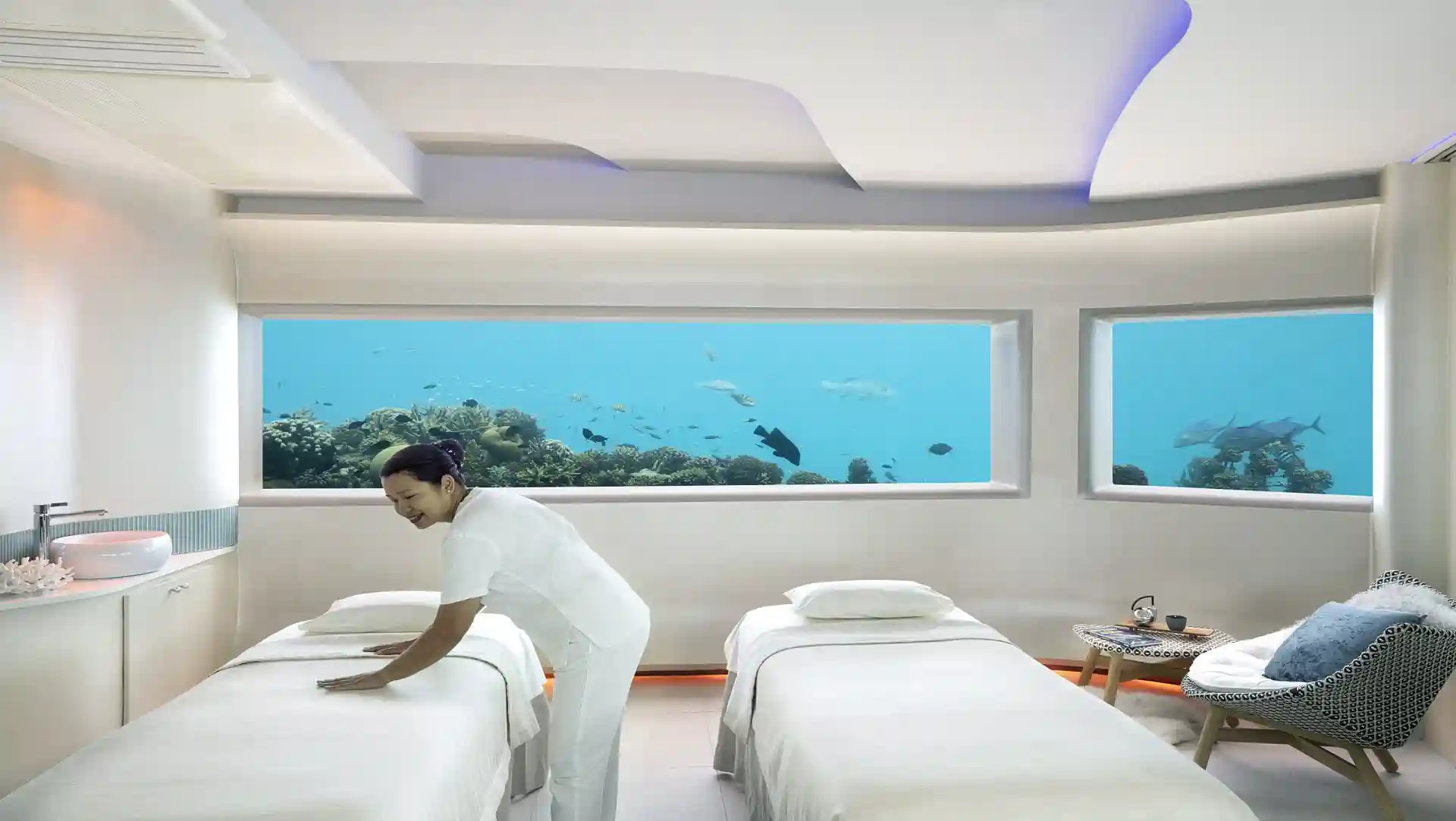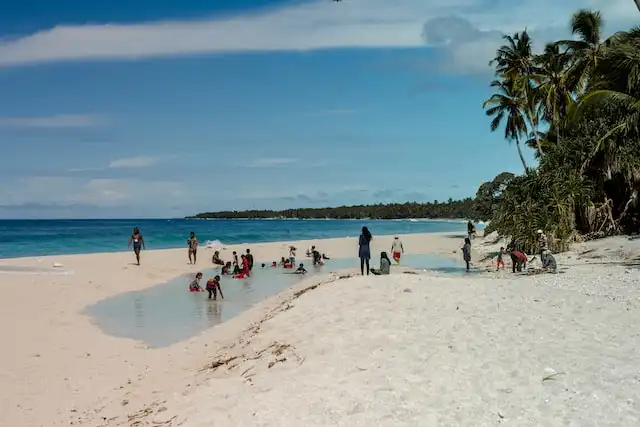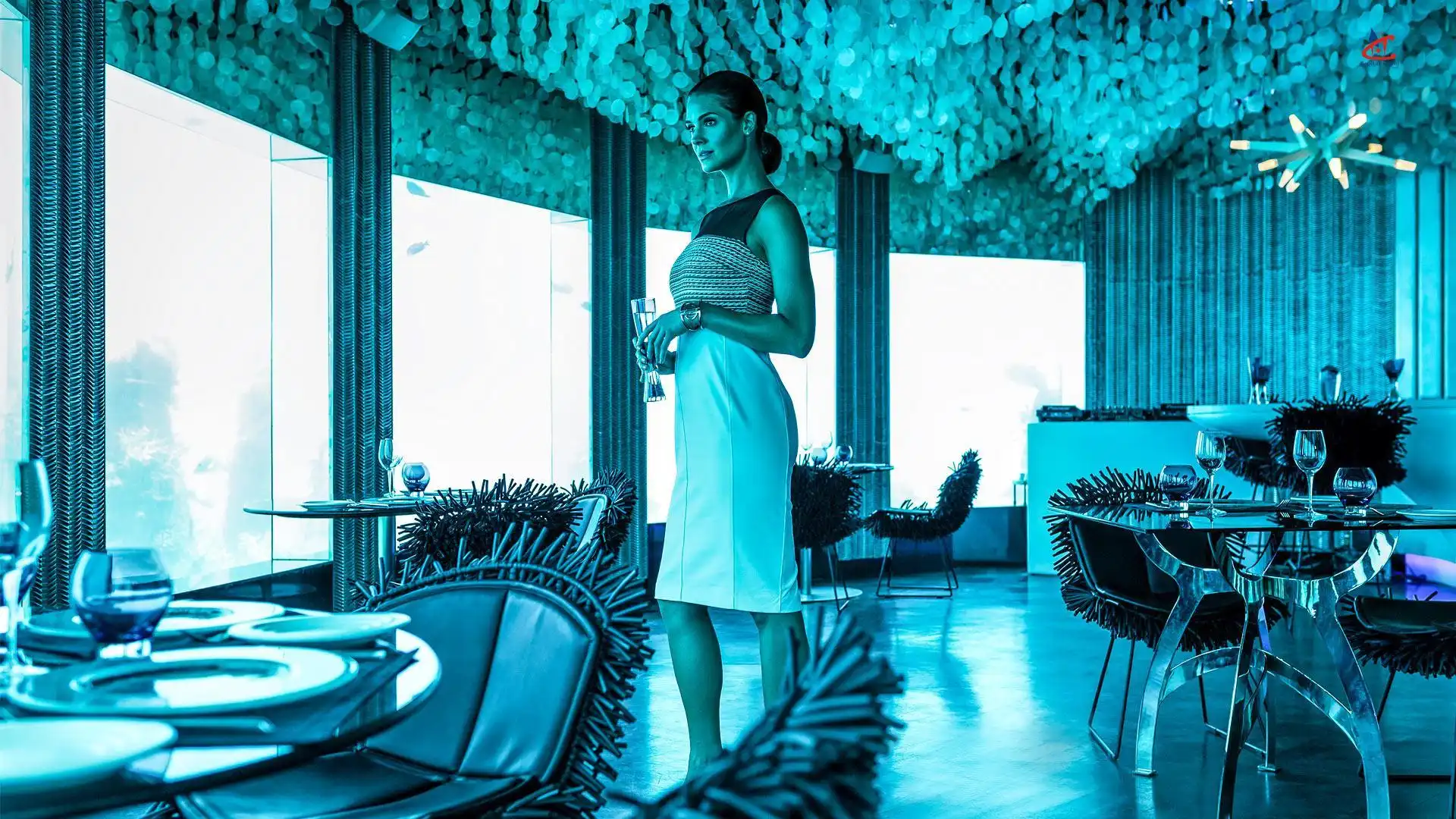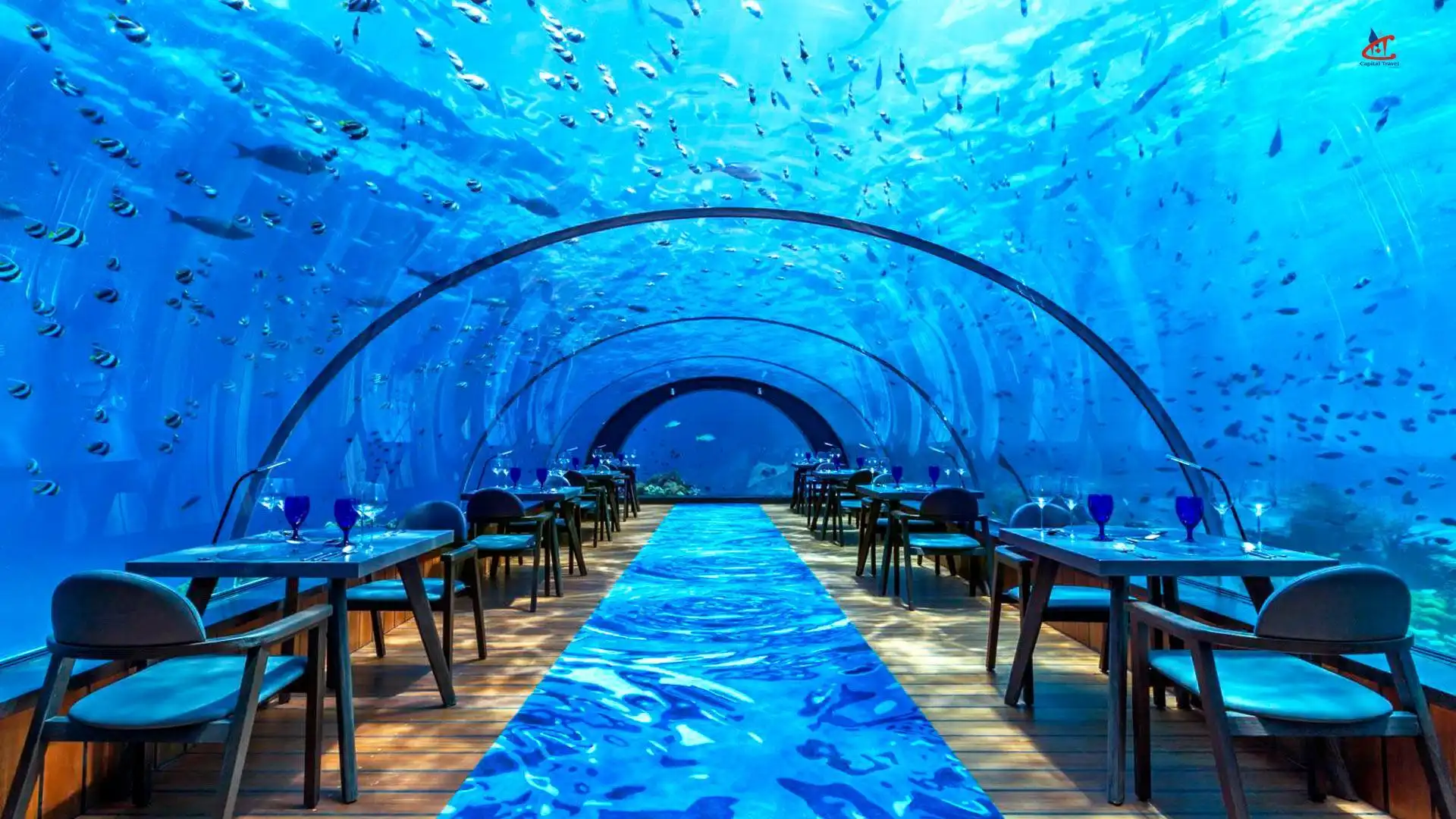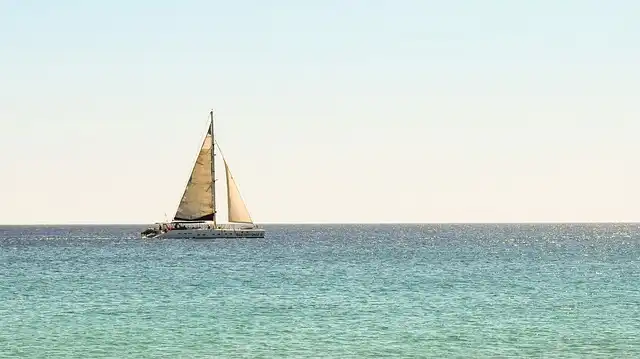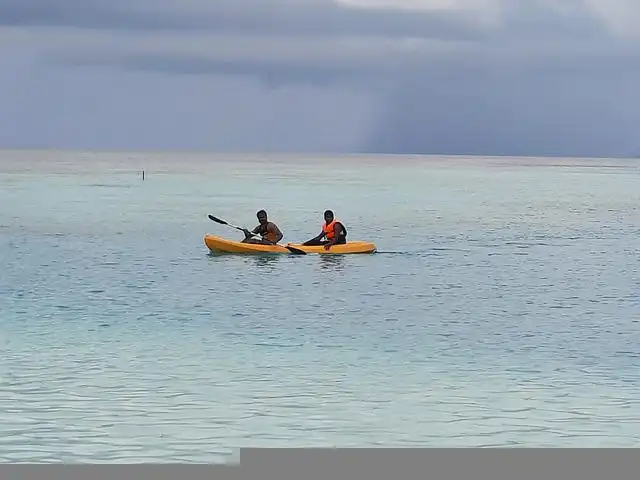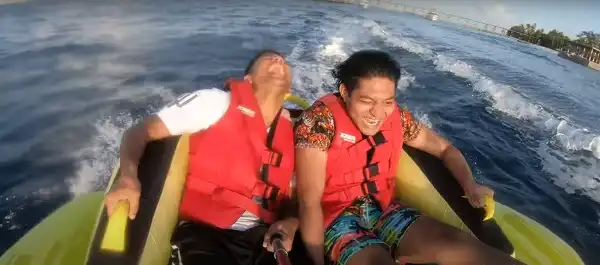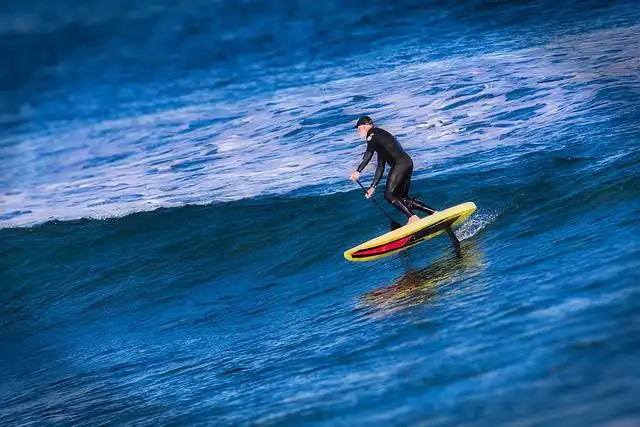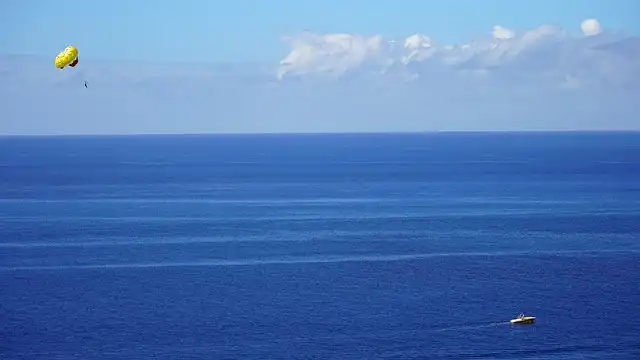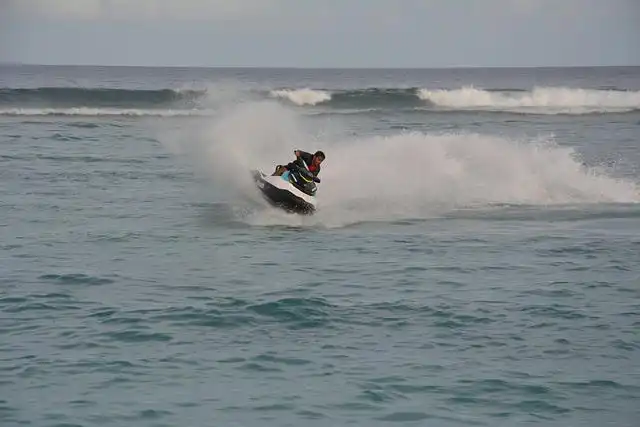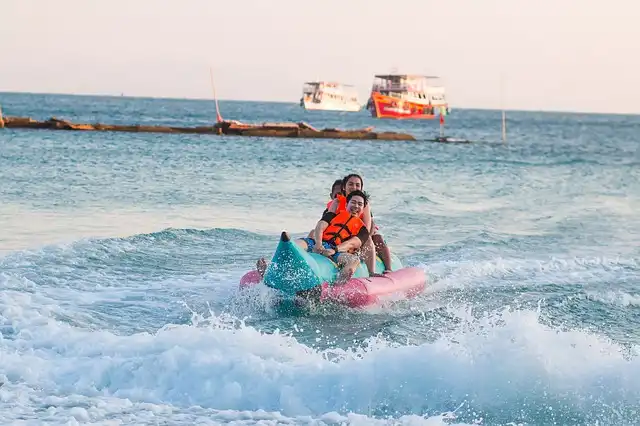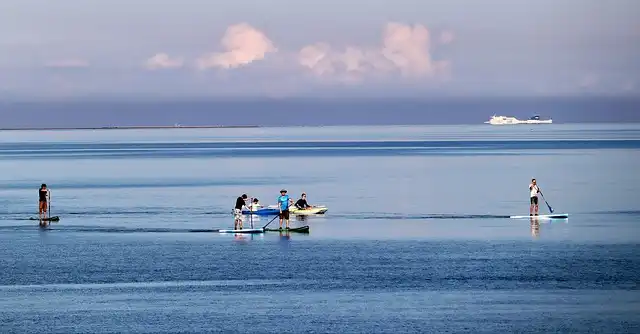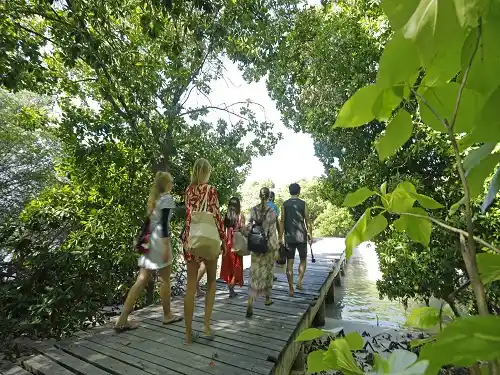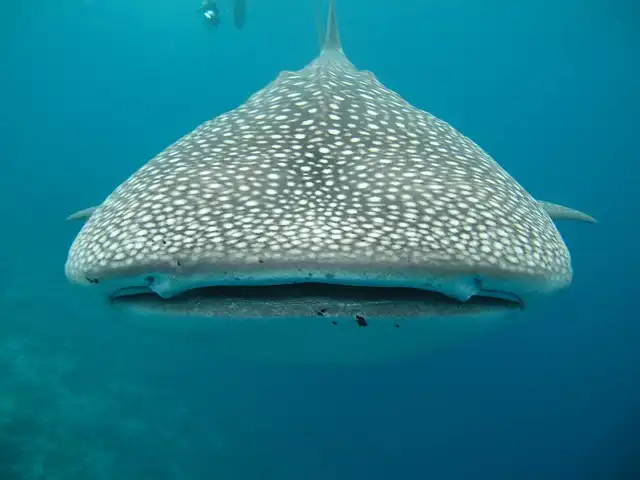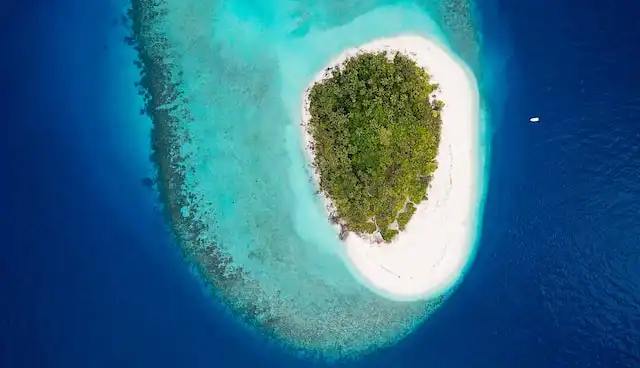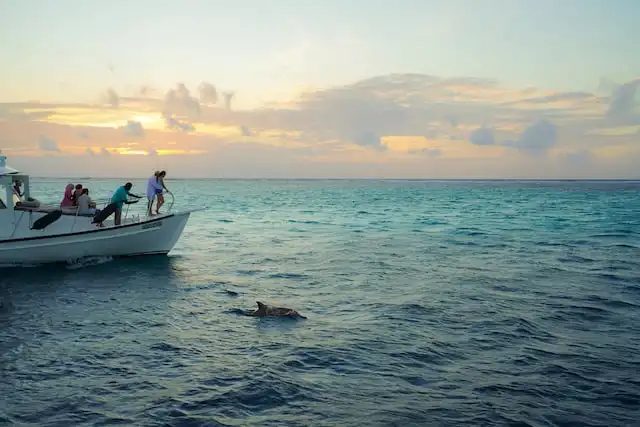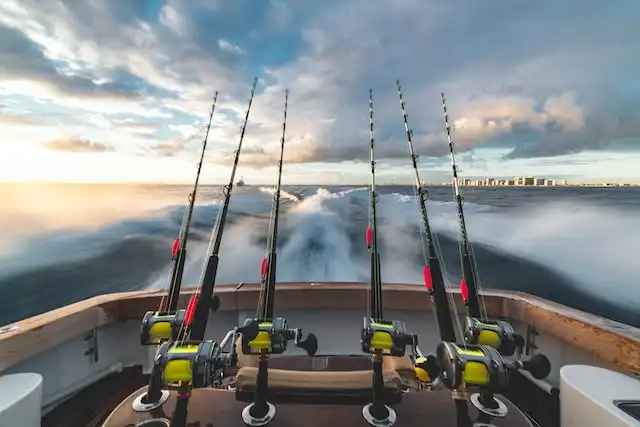Are you looking for Maldives activities? Well, you are in the right place. We do arrange snorkeling, diving, and other water sports activities in the Maldives. Before we jump into any suggestions, we want to tell you that, the Maldives activities are primarily water-based. In the Maldives, there is just 1% of land and 99 percent of it is ocean water. The average island size is 2 km2, and the water separates all of the islands, making it difficult for tourists to visit other islands in a short period of time. The Maldives are also known for its crystal blue water, abundant marine life, and white sand beaches. The Maldives offers a wide range of activities for tourists to indulge in, from water sports and diving to cultural tours and relaxation. In this article, we will explore some of the most popular activities to do in the Maldives.
Maldives Snorkeling
Maldives Diving
Maldives Fishing
Best Things To Do
Water Sports
Excursions
Snorkeling Videos
Places To Visit
FAQs
The Maldives is a paradise for snorkelers. With crystal-clear waters and vibrant marine life, the Maldives is home to some of the world's most beautiful coral reefs. You can explore the colorful coral gardens and swim with tropical fish, sea turtles, and even dolphins. Some of the best places for snorkeling in the Maldives include Banana Reef, Fotteyo Kandu, and Maaya Thila.
When visiting the Maldives, you will undoubtedly encounter most of the island's famous activities, including snorkeling. It is the ideal destination for those who enjoy underwater experiences, with around 2500 reefs. About 900 of the 2500 reefs are house reefs. It goes without saying that snorkeling in the Maldives is unparalleled. The island's crystal clear seas and the azure oceans that surround it provide a wonderful experience. So, if you're planning a snorkeling excursion in the Maldives, here's what you should know.
Who is eligible to snorkel in the Maldives? Anyone can! because the calm, clean waters offer excellent opportunity for starting and exploring. The Maldives' marine life is an unendingly magnificent aquarium that is entirely natural. To marvel at the underwater environment and all the brilliant delights of the Indian Ocean, you do not need to dive far or deep.
Yes, snorkelling in the Maldives is quite safe. Before you begin exploring, you will need to heed certain recommendations and guidance from your dive shop or snorkelling guide.
Hard corals, including a variety of table, finger, staghorn, boulder, lobe, and brain corals, make up the majority of the reefs in the Maldives. A few soft corals, such as leather coral, were present, but there were no sea fans or rods like those found in the Caribbean. Among other things, you may snorkel on top of and around the margins of pinnacle reefs, over shallow patch reefs with sandy bottoms, and along coral wall walls.
In the Maldives, there are two distinct seasons known as monsoons. The dry season lasts from June through August. The rainy season is the Southwest Monsoon. It fluctuates when the seasons change. According to rainfall statistics, it appears that the months from May through December are the wettest while the months from January through April are the driest. The windiest months are March and April, both in terms of average wind speed and wind probability.
The Maldives is one of the top scuba diving destinations in the world. With more than 1,000 species of fish and 250 species of coral, it offers an unparalleled underwater experience. The warm waters, excellent visibility, and strong currents make it an ideal place for diving enthusiasts. Some of the best dive sites in the Maldives include Fish Head, Manta Point, and Maalhos Thila.
The Maldives is an exquisite scuba diving destination, with crystal blue sea, white sand beaches, and excellent visibility. Manta rays, whale sharks, reef sharks, soft and hard corals, and other marine life may be seen during a diving vacation to the Maldives. The archipelago is also noted for its excellent selection of diving resorts, and liveaboards in the Maldives are available for all budgets, from low to high. Scuba diving in Maldives is also a fantastic recreational activity for people who prefer more active vacations rather than spending their days lounging by the pool... Read More..
Maldives reef Fishing is a fun activity especially to do with family or friends. Fishing is the second source of income for the Maldives. Tuna is the most famous and common type of fish caught. There are two methods of fishing allowed in the Maldives and they are pole and line fishing. An estimated 500 tones of fishes are caught by Maldives fishermen daily and they the most exported product of the country. To catch Tuna fishes it requires a big boat which can travel far distance as tuna are spotted in the far distance. That's why we focus on reef fishes which can be caught from house reefs, if we are lucky, that's why these Maldives fishing trips are always called lucky reef fishing trips.
At 120 mph, skydive Maldives allows you to feel the exhilaration of free-falling over the gorgeous sky above the Maldives. The thrilling descent lasts roughly a minute, followed by a stunning and tranquil decline to the landing location or drop zone. As you glide down for a safe landing, take in the views of the archipelago country's various islands.
Tandem skydiving is an excellent opportunity for novices and first-time skydivers to get a taste of the exhilarating sport. You will be joined by highly trained experts whose gear will be attached to yours for a secure and thrilling experience while skydiving in the Maldives.
Many resorts in the Maldives offer spa treatments and wellness activities such as yoga, meditation, and Ayurveda to help you relax and rejuvenate.
Visit the "Sea of Stars" on Vaadhoo Island to spice up your typical beach days. Under the moonlight, the sea here appears to be glistening magnificently.
The free-floating, tiny planktons of the ocean show this phenomenon, known as bioluminescence, as a kind of defence against predators. The sea's bioluminescence phenomenon gives the water its blue and brilliant appearance. The water is completely safe for you to play in because it emits a cool blue light and produces no heat.
The most popular recommendation for beach lovers visiting the Maldives is to take a leisurely stroll along the stunning Hulhumale artificial beach Beach. One of the most romantic experiences anyone would want to have on an island is strolling on the beautiful white sand with their significant other while wearing only their underwear.
You may also take in the most breath-taking sunset views as you stroll down the artificial beach in the evening. Additionally, you may have some genuine and delectable seafood at any of the many cafés and stands that line the white sands of the beach.
Interacting with people is another enjoyable activity to undertake in the Maldives. The Maldives is renowned for its wonderful culture, and through connecting with the people there, one may learn more about its influences. Discover the actual spirit of the area by sneaking a peek at the adjacent villages and partaking in the gastronomic festivals, rituals, and ceremonies.
If you're still unsure of what to do in the Maldives, there's a possibility you haven't heard of partying on the gorgeous archipelago while submerged 10 feet below the surface. Off the shore of Niyama Island, 6 metres below sea level, there is a restaurant and bar named Subsix that is enclosed in fibreglass.
Subsix, which is regarded as the first and only underwater nightclub in the world, provides a distinctive partying experience with full-throttle music, mouth-watering cuisine, exotic drinks, top-shelf wines, and magnificent views of manta rays and other colourful fish.
One of the finest things to do in the Maldives for someone looking for a unique dining experience is to go to 5.8 Undersea Restaurant. Take your special someone out to supper at Hurawalhi Island Resort. At this one-of-a-kind underwater restaurant, 5.8 metres below sea level, you may indulge in delectable and exotic gourmet dishes.
You may take in the stunning views of the vibrant aquatic environment while indulging in the contemporary and inventive cuisine provided here. Enjoying fresh seafood dishes while waving at sharks and reef fish passing by your dinner table will undoubtedly be an experience of a lifetime.
One of the things that history aficionados like to do in the Maldives is take a stroll through the rich history that has been preserved in the National Museum. This fascinating museum, which displays and preserves a sizable collection of royal antiques and artefacts, aims to instil a sense of patriotism among the Maldivian people.
The National Museum, which is located in the lovely Sultan Park, houses paper and cloth texts, historical armour and weapons, ethnographic items, as well as diverse jewels and royal regalia from bygone eras. The National Museum of the Maldives is regarded as the centre of historical knowledge and the pinnacle of the nation's priceless legacy.
Watching the venerable Boduberu performance is among the most fun things to do in the Maldives. This lovely, timeless performance will bring to life African folktales that are said to be more than 900 years old through song and dance.
The Boduberu Show will teach you a lot about the Maldives' rich history, historical tales, and significant historical events. You'll be compelled to tap your feet in time to the music as drums and rhythms merge with the harmony of the pitch of the ancient tunes.
Are you seeking the most significant water activities in the Maldives or things to do in Maldives? Perfect beaches and thrilling water sports activities may be found in the beautiful island country. Here's a list of the most significant water activities to try in the Maldives during your visit to the stunning islands. Please take a peek to learn more about the greatest among them!
The island's natural surroundings, including pristine white beaches with blue lagoons surrounding them and lush palm trees, provide a relaxing scene. The magnificent coral gardens below the Indian Ocean make the island even more stunning.
Not only that, but the island intends to keep you occupied while still providing a relaxing environment. There are a plethora of water activities to choose from.
Have you ever wondered how it might feel to stand atop a wave? Have you really thought about it? If you've experienced this fantasy as well, there's excellent news! Wakeboarding is a sport that can help you achieve that goal. Wakeboarding is a perfect Maldives water activity that requires walking on water while hanging onto a rope. Maintaining balance is the most critical aspect of the activity. This is one of the most popular water activities in the Maldives. The best months to participate in this sport are April through October.
Try to grasp better your center of gravity and how to stay balanced.
As you relax aboard a gorgeous catamaran, let the quiet, lilting seas of the Indian Ocean serenade you! These sailboats provide seclusion, elegance, and excellent vacation moods while you relax with a loved one and take in the breathtaking views of the Maldives. If you view the sunset from a catamaran, you'll get bonus points!
From November to April is the best time to enjoy this pastime. Catamarans are available for hire at all of the country's main ports. In addition to agencies, resort islands provide charters.
The average cost is USD 50-80 per person for one hour, including a guide and staff. Sailing lessons are also available for USD 60 per hour per person.
It's hard to discuss water sports in the Maldives without mentioning flyboarding. Flyboarding is for you if you dare to try something that not everyone is doing, including danger (TBH). It is an intense sport that was only recently developed. Flyboarding is one of the most popular water sports in the Maldives because it includes getting on a flyboard connected to a jet ski via a hose and propels it into the air.
May through October is the best time to participate in this sport. If you're a newbie, don your safety gear and stay balanced because this is one of the most difficult Maldives adventure activities.
The average cost is USD 150 per person for half an hour, including a guide and staff. USD 75 per person for a pro ride for 15 minutes.
This is one of the Maldives' most popular adventure sports, and for a good reason. As you become one with the flowing waves, explore and experience the shoreline at your speed, and watch your worries go away!
April through October is the best time to enjoy this activity. Location: Kayaking facilities may be found on practically every beach in the Maldives, including little beaches on local islands
Kayaks are frequently provided free of charge to guests at resort islands. In addition, a kayak may be rented for as little as USD 10 - USD 50 per individual. Kayak rentals are also available for free at several public beaches.
Isn't the name enough to pique your interest? The word "fun" is in the name of this pastime, and we don't think anyone needs more reason to like it. Contrary to many other water activities in the Maldives, fun tubing entails boarding an inflatable, unpowered tube that will propel you through the water at a high rate. The finest part is the rough ride you'll have on the lake. Believe us when we say it's well worth it. This is one of the top water activities in the Maldives.
The best time to participate in this sport is from April through October. It is preferable to wear old sneakers or water shoes.
Estimated cost: USD 130 for two individuals for 20 minutes.
Imagine yourself like a marine bird soaring above the waves. With the advent of four groundbreaking hydrofoil experiences: Kite Foiling, Wake Foiling, Lift Foiling, and Naish Wing-Surfer, Four Seasons Resort Maldives at Landaa Giraavaru is now the first hotel in the Maldives to make flying fantasies come true.
Kite Foiling is kitesurfing with the inclusion of a hydrofoil under the surfboard, allowing surfers to "fly" over the water's surface at incredible speeds. With the Resort's cutting-edge North Pro hydrofoil kiteboard, riders may experience genuine synchrony with the water.
For those who wish to surf the waves behind the Resort's Master Craft ski boat, the Slingshot Wake Foil combines the pleasure of wakeboarding with the added thrill of operating a hydrofoil.
The electric foil board employs a hand controller synchronized with an electric engine so riders may pick their own pace and learn the skill of "flying" over the water's surface.
Wing-Surfer Naish: The wing-surfer is an excellent option for anyone searching for fresh wind-powered excitement. It's the ultimate portable inflated board riding wing with no gear or strings connected, and it's a hybrid between a windsurfing sail and a kiteboarding kite.
Parasailing is one of the most significant water activities in the Maldives because it allows you to fly away and forget about your concerns for a bit. It gives you a bird's eye perspective of the gorgeous nation, and you will have the time of your life since you are up in the sky. Of course, we understand that flying with a parachute while tethered and pulling a speedboat is risky, but what is life if you don't take chances?
The best time to participate in this sport is from May to October.
Check the weather forecast and pay attention to your teacher because this is one of the most dangerous water sports in the Maldives if not done correctly.
Parasailing will cost you 90 USD per person for 10 minutes in the Maldives.
Regardless of your skill level, the Maldives is the finest spot to surf the waves. The Maldives cover a broad region in the Indian Ocean, and some of the atolls have excellent surf breaks. The ideal months to go surfing in the Maldives are April through October. As high-end Maldives resorts have built-in distant locales near formerly difficult-to-access breakers, luxury surf excursions to the Maldives have grown increasingly popular.
The Maldives' surfer community comprises skilled and inexperienced riders looking for a piece of the action. Pros should travel to the Northern Male Atolls' outer reef breaks, while beginners should stick to the lagoons' smaller waves. If you are a complete novice, you may learn to surf in Thulusdhoo, Himmafushi, or Guraidhoo, where several surf schools are.
Windsurfing, for example, provides you the good exhilarating sensation of surfing in those cold breezy breezes above the waves while still allowing you to enjoy the trip through them. That's correct; if you book the proper resorts, windsurfing in the Maldives may be one of the top water activities in the country. Even if you don't book via an alternative, you can always find a place to ask around and communicate with the locals or hotel staff.
From May through October is the best season to enjoy this sport. However, if you're a newbie in windsurfing, it's critical to find a safe environment where you may practice and learn.
One of the most popular activities in the Maldives and a thrilling adventure not to be skipped is Jet Skiing. Today, Jet Ski Safari is getting increasingly popular. Explore the Maldives' other islands, snorkel a secret coral, and visit the lovely areas that are only viewable by Jet Ski.
The newest boats with minimal emissions and noise levels are used in an ecologically friendly approach to jet skiing. Get up and personal with the island's natural beauty while maintaining its tranquility. This slow-paced, interpretative encounter respects the environment and provides a fresh viewpoint on the Maldives. It provides visitors with an adventure with a professional guide and the opportunity to swim on a distant coral and view other Maldives islands.
This delightful pastime involves riding on a big boat that you are harnessed to so you don't fall over while you speed across the ocean's deep blue seas. This adrenaline-pumping team activity is a must-do in the Maldives. So keep holiday hunger at bay with a banana a day, minions!
April through October is the best season to visit. This is available at practically every resort beach across the country. Malé, Baa Atoll, Ari Atolls, and Kaafu Atoll are the most popular.
For 20 minutes, the average cost is between $50 and $80 per person.
Take a seat. Stand-up paddleboarding or paddleboarding is a new worldwide sport with roots in Hawaii. It's also a fantastic way to glide across the stunning seas of the Maldivian reefs. With these boards, the possibilities are infinite because you may do several activities by yourself or with others. SUP boards may be used for a variety of activities. While paddling, you can either stand on the board or sit. While your pal's paddle, relax on the board's tip. On a shallow day, explore the water snorkeling.

The Maldives is a small country with a smaller population, but it has a vast history, being the top 20 poorest countries of the world in the early 1980s, the Maldives was also attacked by many invaders and budhism also were a religion followed by maldivian in early days. To find out about these stories, cultures, traditions, and lifestyle, you need to visit local islands. There are a total of 200 inhabited islands in 22 atolls.
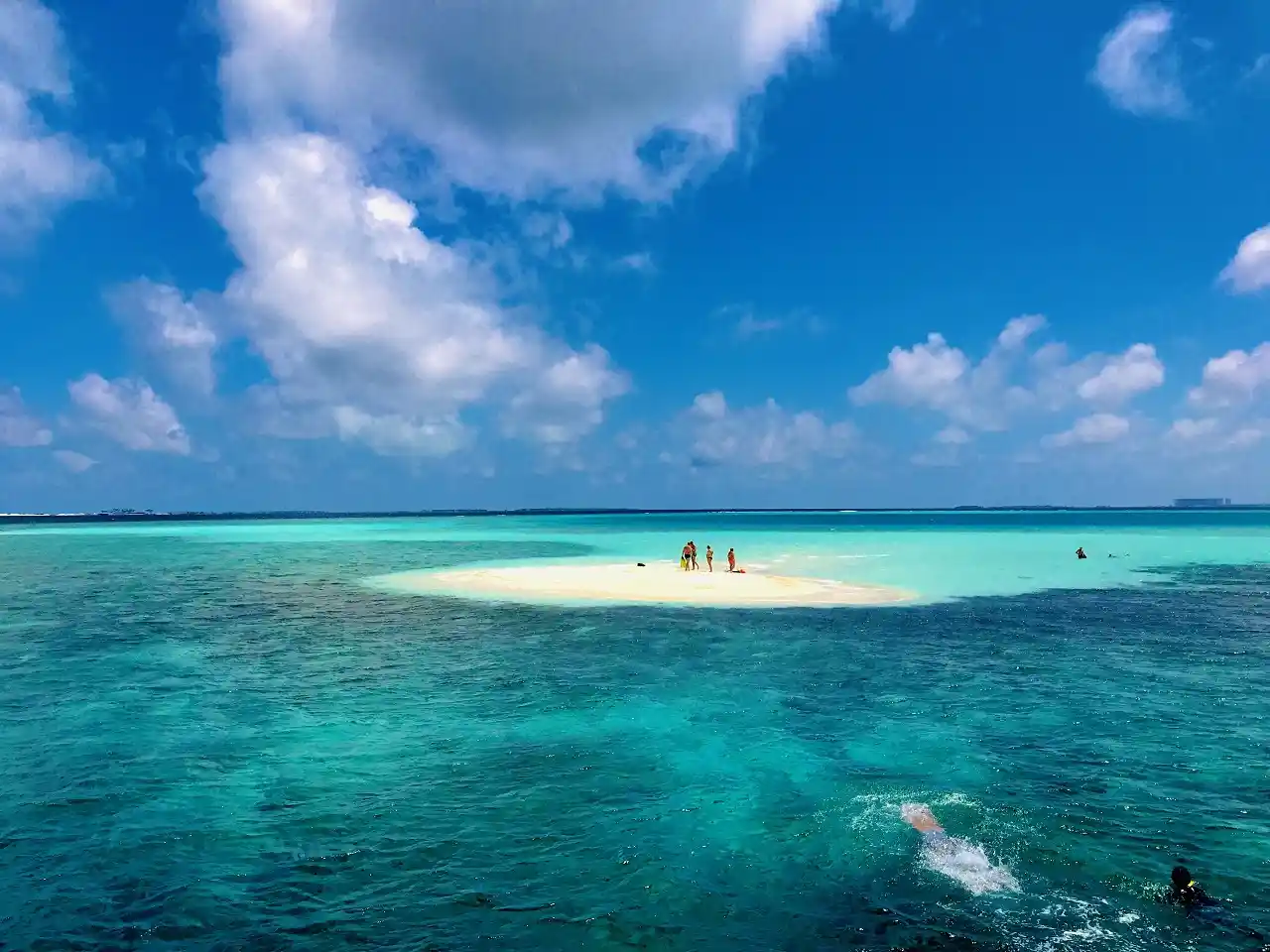
The islands in the Maldives are formed in different shapes and sizes. The islands from erupted volcanos, which later changes to a coral reefs and then form a sandbanks on top of the reefs. These sands banks later becomes islands. Some sandbanks get entirely submerged at high tide and surface only at low tide. There are many sandbanks across the country, to visit these sandbanks you need a boat transfer.
The Maldives capital city isn't exactly a popular tourist destination, but if you're looking for a true local experience, make it a point to visit. The local fruit and vegetable market, as well as the adjoining fish market, are the most interesting sites to visit in the capital city since you can see a lot of action and get a peek of the primary items of local cuisine. The extraordinary talents that fisherman demonstrate when cutting fish piqued my interest.
The overwater villas with direct access to the sea are one of the Maldives' most well-known attractions. All I can say is that staying in one is a fantastic experience and one of the best things to do in the Maldives. The rooms are enormous, with the most luxurious beds; there is a plunge pool and a sundeck, as well as a jacuzzi in the back. The water and the breeze are the only sounds one can hear. Furthermore, the view is breathtaking.
A sunset sail is one of the top things to do in the Maldives if you want to truly appreciate the natural splendour of the archipelago's pristine islands.
Take a joyous hour-long cruise aboard a native boat or dhoni in the evening to take in the breathtaking views of the setting sun. You could get the chance to see some cute dolphins while you enjoy the panoramic views of nature while travelling.
This is unquestionably a fantastic experience you can have when visiting the Maldives. You may take trips and purchase packages to view the whale shark, one of the most stunning and amazing animals, in its native habitat. One of the greatest locations to see a whale shark, which is one of the endangered fish species, is South Ari Atoll in the Maldives. Despite having gigantic jaws and hundreds of teeth, these fish are gentle giants who pose no threat to people. You must at least once in your life experience swimming with these gentle creatures who are accustomed to sharing the water with people.
After landing a tasty catch, travel to a barren island in the Maldives for food and celebration. With the entire island to yourself, soak in the untamed nature all around you, stroll along the spotless beaches, and go swimming in the clear seas.
Another thrilling activity to do while on vacation in the Maldives is dolphin watching. Dolphin tours at Cinnamon Hakurra are renowned for being extraordinary. Visit at sunset to see playful animals enhancing the beautiful scenery. This is one of the most well-liked entertaining activities in the Maldives, especially if you are travelling with children.
For non-divers who want to see the splendour of the Maldives' underwater environment, this trip is especially advised. Witness rare fish, turtle, and shark ray species in their native habitats while taking in the breathtaking vistas of the reef.
The state-of-the-art Whale Submarine, which presently holds the record for the largest tourist submarine in existence, is a fantastic opportunity to explore the undersea environment.
The Maldives are one of the most popular fishing destinations globally, thanks to the best blend of crystal clear seas, white-sand beaches, and a diverse range of marine life. Fishing is a huge part of the Maldives experience, and many anglers dream of chartering a boat and catching a monster fish that will actually move you! Maybe you've heard lots about this beach resort but have no idea what fishing looks like or what the most popular fishing tactics are. The Maldives boasts some of the world's most significant fishing areas, and you don't have to go far from the beach to set new records.
The Maldives is a fantastic fishing location for expert and amateur anglers alike, featuring spectacular prize sailfish and marlin, as well as shark, GT, gigantic barracuda, rainbow-runner, and wahoo.
The Maldives are an island republic comprising 26 natural coral atolls (over 1,000 islands) scattered over almost 35,000 square miles 400 miles southwest of India. Despite the fact that the Maldives is made up of 26 natural coral atolls, the country is divided into 19 atolls (areas) for administrative purposes. So, if you looked at a map, you'd see 19 zones. Topside, the Maldives provide some of the most stunning views you will ever see in your life. The sea covers more than 95 percent of the Maldives. It is also one of the world's lowest countries, and due to rising sea levels, it is in danger of being drowned one day.
The Maldives is often regarded as one of the safest destinations on the planet for snorkeling and other watersports. In the Maldives, you can easily get a good and licensed snorkeling instructor as well as high-quality equipment such as a snorkel, fins, and mask.
If you arrange a snorkeling tour through your hotel in the Maldives, you should expect to pay USD ($40) per person.
The Maldives is one of the few places in the world where visitors may witness these beautiful beings all year. The best part is that all of the species found here are completely harmless! On a regular whale watching excursion, you'll see plenty of hammerhead sharks, spotted leopard sharks, and blacktip reef sharks.
The off-season in the Maldives runs from May to October, and it's a wonderful time to go if you want to save money on flights and accommodations.
The weather in the Maldives is hot and sunny all year. The best months to visit Maldives are November through April, with December being the busiest. The monsoon season lasts from May through October. I went in September, and the weather was just perfect: hot, with a bit of air that made it truly nice and never oppressive, and excellent enough to appreciate all of the Maldives' attractions.
